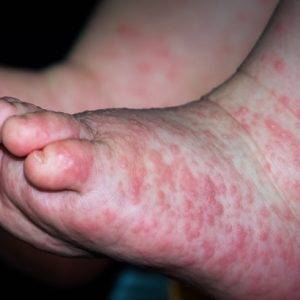What Are the Types of Breast Cancer Treatment available? Breast cancer treatments are local or systemic. Local treatments are used to remove or destroy the disease within the breast and surrounding regions, such as lymph nodes. These include: • Surgery, either mastectomy (removal of the whole breast) or lumpectomy (removing part of the breast with the tumour). There are different types of mastectomies and lumpectomies. The option of breast reconstructive surgery is also available following removal of the tumour to improve cosmetic effects. • Radiation therapy. This involves using a large machine called a linear accelerator to deliver precise amounts of high-energy radiation to kill cancer cells. The radiation stops the reproduction of cancer cells while minimizing damage to healthy tissues. Newer technologies such as intensity modulated radiotherapy (IMRT) have less toxicity. Systemic treatments are used to destroy or control cancer cells all over the body and include: • Chemotherapy, which are drugs given intravenously or orally to kill cancer cells. Side effects may include nausea, hair loss, early menopause, hot flushes, fatigue, and temporarily lowered blood counts. There are different chemotherapy regimens available with varying side-effect profiles. • Hormone therapy (endocrine therapy), which works in women who have tumours that express the oestrogen or progesterone receptors by preventing the hormones from promoting the growth of breast cancer cells that may remain after breast cancer surgery. Side effects can include hot flushes and vaginal dryness. Drugs such as tamoxifen can be used in both premenopausal and postmenopausal women and the aromatase inhibitors Arimidex, Aromasin, and Femara are only suitable in postmenopausal women. • Biological Therapy such as Herceptin or lapatinib, which uses the body’s immune system to destroy breast cancer cells that have high levels of a protein called HER2. Women with breast cancer may have just one form of breast cancer treatment or a combination of treatments, depending on the characteristics of the tumour and patient factors and preferences. How Is the Type of Breast Cancer Treatment Determined? The type of breast cancer treatment recommended for each woman with breast cancer will depend on the histological characteristics of the tumour such as the size, grade, and extent of disease in the lymph nodes and/or throughout your body (the stage of the cancer). Also, the presence of the HER2 oncogene and endocrine receptors (estrogen and progesterone receptors) as well as certain mutations in the tumour will determine the treatment. Apart from characteristics of the tumour, the women’s age, menstrual status, underlying health issues, and personal preferences play a role in this decision making process as well.  Prepared by Dr Sangeetha Poovaneswaran Dr Sangeetha Poovaneswaran MBChB (UK), MRCP (UK), FRCR (UK), AM (Mal) Senior Lecturer at International Medical University,Malaysia Consultant Clinical Oncologist, Hospital Tuanku Ja’afar, Seremban, Malaysia Consultant Clinical Oncologist, Nilai Medical Centre, Malaysia Dr Sangeetha is actively involved in clinical research and provides support to the Breast Cancer Support Society, Negeri Sembilan. She has a number of publications in medical literature and has presented at both national and international oncology and medical education conferences. She has authored several chapters in a book titled,’ Excellence in Clinical Case Presentation in Medicine’ for undergraduate medical students. Read more about this series: Breast Cancer Part 1 : Basic Facts Breast Cancer Part 2 : Diagnosis Process
Prepared by Dr Sangeetha Poovaneswaran Dr Sangeetha Poovaneswaran MBChB (UK), MRCP (UK), FRCR (UK), AM (Mal) Senior Lecturer at International Medical University,Malaysia Consultant Clinical Oncologist, Hospital Tuanku Ja’afar, Seremban, Malaysia Consultant Clinical Oncologist, Nilai Medical Centre, Malaysia Dr Sangeetha is actively involved in clinical research and provides support to the Breast Cancer Support Society, Negeri Sembilan. She has a number of publications in medical literature and has presented at both national and international oncology and medical education conferences. She has authored several chapters in a book titled,’ Excellence in Clinical Case Presentation in Medicine’ for undergraduate medical students. Read more about this series: Breast Cancer Part 1 : Basic Facts Breast Cancer Part 2 : Diagnosis Process








